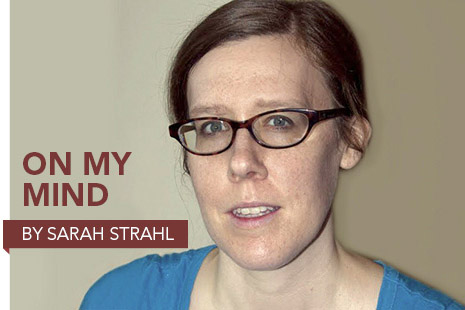
Technology is about people. It might seem like technology is about being on the cutting edge and making everything easy, but really, it is about human connection for our patrons—even when it seems like some of our patrons come in just to play solitaire for hours on end. This idea, that people are at the center of our operations, is what libraries have to remember when it comes to choosing how to best deploy technology and digital resources.
Technology staffers at public libraries should be asking themselves continually: How do we make this technology fit the library? How do we make and keep technology nimble and adaptable? Can we ever make technology dynamic enough to ensure we can keep up with unforeseen problems? How do we do this so we can help patrons and staff forge the connections they are seeking? Lastly, how are those of us who oversee library technology able to keep it fitting our library’s needs, instead of trying to cram or expand the library to the limits of the technology?
Spoiler alert: I don’t always know. I just think about these questions a lot.
A current example involves a digital content service, which shall go unnamed, that my library has had available for patrons for at least two years. At the time of writing this, we’ve had a few months when the TV shows and movies provided by that service didn’t actually play on library computers. How can we provide a service that our patrons cannot use in our own library?
The problem stems from our web browsers being in a stripped-down mode so they don’t keep or track any patron data. We use this browser mode for a number of reasons, including a desire to be open and accessible, and because we don’t have any software on our computers to clear out patron data. The plugin that should be playing our streaming content really hates the stripped-down browser mode. By making ourselves flexible in one area, we’ve created an as-yet-unsolved technology conundrum in another.
It is about human connection for our patrons—even when it seems like some of our patrons come in just to play solitaire for hours on end.
Another example that keeps me going around in circles involves our study rooms and room-booking software. Our library isn’t convinced that we’ve found the right tool yet. We like the idea of the 24/7 library, where patrons can book rooms online at 2 a.m. and breeze through to that room at 2 p.m. without ever interacting with a human. In theory.
But what happens when someone is still in the study room and it takes them a few minutes to pack up? Most of the time it’d probably be fine, but patron-to-patron interactions are more likely to be volatile than if library staffers were handling the transition. Our study rooms at times are precious library real estate. In order to make this work, we have to find a way to use technology that aids in study room bookings without causing more problems on the human interaction side of things. Does that exist?
Systems that help us connect as humans—while simplifying processes and maintaining privacy—would be the perfect solution. Maybe one day our library will be able to take something out of the box and customize it to the point of it working exactly the way we want it to work. And when that day comes, should public libraries be hiring coders to execute this customization and make technology more people-friendly? Alternatively, is it possible for libraries to form true partnerships with vendors, and to put the burden of making technology that’s adaptable to a variety of actual patrons on them?
I love technology, but most of all I love when I find the right technology. When the right technology becomes ubiquitous and integrated so thoroughly and seamlessly into our library’s life, we forget what we even did before we had it. It can be hard to achieve, but that’s what I think it looks like when technology is a perfect fit for the library—it’s people-serving and people-based.


